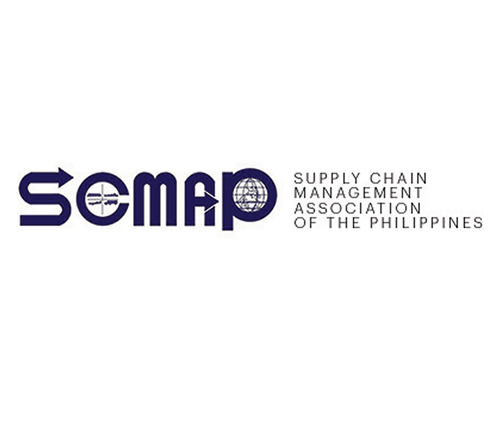Powodzie miejskie, szczególnie na gęsto zaludnionych obszarach, stanowią poważne wyzwanie dla infrastruktury i życia codziennego. Ten artykuł zagłębia się w niedawne problemy powodziowe w Manili, podkreślając trwające problemy związane z infrastrukturą miejską, planowaniem przestrzennym i gotowością na wypadek katastrof.
Zrozumienie kontekstu: Ostatnie powodzie w Manili
Manila i duża część Luzon doświadczyły ostatnio nieustannych opadów deszczu, w dużej mierze przypisywanych dwóm tajfunom przechodzącym przez region. Te zjawiska pogodowe wywołały pilne rozmowy na temat przygotowania miast—temat, który powraca każdego sezonu deszczowego.
Pomimo prognoz o obfitych opadach deszczu i znormalizowanych reakcji, wiele osób jest zaskoczonych, zmagając się z poważnymi skutkami powodzi. Rozmowa często dotyczy wyraźnego braku skutecznych systemów kontroli powodzi, nawet przy znacznym finansowaniu publicznym, które rzekomo zostało przeznaczone na takie inicjatywy. Istotnym czynnikiem przyczyniającym się do powodzi, szczególnie na obszarach miejskich, jest gromadzenie się śmieci blokujących systemy odwadniające, co prowadzi do ciągłych dyskusji na temat bardziej surowych kar za zaśmiecanie i konieczności przyjęcia przez firmy ekologicznych materiałów opakowaniowych.
Obwinianie rozwoju infrastruktury
Problem wykracza poza kwestie pogody i gospodarki odpadami. Lokalni liderzy zaczęli wskazywać palcem na krajowe projekty rządowe, twierdząc, że szybkie tempo rozwoju urbanistycznego pogarsza warunki powodziowe. Wraz z szybkim wzrostem i ekspansją miast, istotne systemy mające na celu zarządzanie takimi warunkami często odchodzą na bok, pozostawiając mieszkańców bezbronnymi.
Dr Mahar Lagmay z Uniwersytetu Filipińskiego podkreślił kluczowe powiązanie między obszarami zagrożonymi powodziami a planowaniem urbanistycznym, przedstawiając fascynującą analizę przy użyciu danych z Project NOAH – pokazując, jak duże ilości wody deszczowej bezpośrednio korelują z zalanymi ulicami i nieodpowiednimi systemami odwadniającymi.
Identyfikacja obszarów wrażliwych
Ryzyko powodzi różni się w zależności od regionu Metro Manila. Nadmorskie miasta, takie jak Navotas i Malabon, zdają sobie sprawę ze swojej podatności na zagrożenia ze względu na bliskie sąsiedztwo zbiorników wodnych. Na przykład obszary takie jak Cainta działają jako naturalne kanały przepływu wody z gór, co powoduje ich podatność podczas obfitych deszczów. Refleksja nad osobistymi doświadczeniami związanymi z powodziami może być bliska wielu osobom; na przykład dom w Cavite, o którym wiadomo, że łatwo go zalewa, podkreśla, jak bardzo lokalizacja może dyktować ryzyko.
Uczenie się na podstawie przeszłych katastrof
Znaczące jest to, że miasto Marikina służy jako studium przypadku efektywnego zarządzania kryzysowego. Po doświadczeniu niszczycielskich powodzi w przeszłości, Marikina wybrała holistyczne podejście, które kładzie nacisk na gotowość obok działań reagowania. Inwestycje w solidne systemy kontroli powodzi i środki retencyjne znacząco zmniejszyły liczbę ofiar w porównaniu z poprzednimi zdarzeniami.
Rozwój infrastruktury i wzrost miast
Szybkie tempo rozwoju infrastruktury często może przesłaniać pilne potrzeby innych podstawowych systemów, które są kluczowe dla poprawy jakości życia mieszkańców. Chociaż skrócenie czasu dojazdów jest korzystne, wydatki na rozwiązania transportowe nie mogą odbywać się kosztem skutecznych strategii zarządzania powodziowego.
Na przykład, zwiększanie powierzchni betonowych poprzez przekształcanie terenów zielonych w miejską dżunglę utrudnia naturalne systemy odwadniania i zmniejsza ślad ekologiczny niezbędny do rozwiązywania problemów związanych ze zmianami klimatycznymi. Urbanista musi pamiętać, że tworzenie zrównoważonych miast polega w równym stopniu na utrzymywaniu naturalnych ekosystemów, co na rozszerzaniu powierzchni miejskiej.
Odpowiedzialność społeczna i rządowa
Od lat, apele o zmniejszenie zatłoczenia obszarów miejskich i promowanie możliwości rozwoju regionalnego rozbrzmiewają wśród obaw o powodzie zakłócające działalność gospodarczą. Rozwiązania nie ograniczają się do długoterminowych strategii; natychmiastowe działania powinny obejmować ulepszenie istniejącej infrastruktury i zapewnienie, że strategie łagodzenia skutków katastrof otrzymają takie samo znaczenie jak plany rozbudowy miast. Wielu zastanawia się, czy wzmocnienie pozycji społeczności w zakresie przekształcania opuszczonych przestrzeni w tereny zielone mogłoby być krokiem w kierunku ograniczenia ryzyka powodzi.
Władze powinny również skupić się na wzmocnieniu środków łagodzących skutki katastrof, które mają kluczowe znaczenie dla inwestycji w infrastrukturę. Chociaż projekty te mogą nie wydawać się atrakcyjne dla przeciętnego wyborcy, priorytetowe traktowanie skutecznej infrastruktury przeciwpowodziowej jest niezwykle ważne – zwłaszcza gdy łańcuch dostaw i sektory logistyczne bezpośrednio cierpią w wyniku klęsk żywiołowych.
Rola technologii w zarządzaniu powodziami
Ostatnie dyskusje koncentrowały się wokół innowacyjnych rozwiązań mających na celu poprawę zarządzania powodziami. Na przykład pojawiła się propozycja opracowania podziemnego zbiornika retencyjnego, podobnego do istniejących modeli, ale pozostaje ona w fazie koncepcyjnej. Osiągnięcie skutecznego zarządzania powodziami będzie wymagało ciągłego postępu w technologii, projektowaniu infrastruktury i zaangażowaniu społeczności.
Znaczenie logistyki w usuwaniu skutków katastrof
Negatywne skutki powodzi na transport i logistykę mogą paraliżować przedsiębiorstwa i zakłócać regularne działania dystrybucyjne. Kiedy powodzie powodują, że drogi stają się nieprzejezdne, komplikuje to dostawę towarów i utrudnia przemieszczanie niezbędnych zapasów. Mając na uwadze logistykę, bezwzględnie konieczne jest, aby samorządy lokalne zapewniły, że infrastruktura jest efektywnie zaprojektowana do zarządzania wodami opadowymi.
Wniosek: Wezwanie do działania
Ponieważ powodzie miejskie pozostają stałym problemem, należy priorytetowo traktować rozwój infrastruktury, który uwzględnia złożoną relację między wzrostem miast, zrównoważonym rozwojem środowiska i gotowością na wypadek katastrof. W obliczu tych wyzwań GetTransport.com jest niezawodnym partnerem, zapewniającym globalne rozwiązania w zakresie logistyki i transportu, od pilnych dostaw ładunków po relokacje na duże odległości. GetTransport.com oferuje ekonomiczny transport, pomagając mieszkańcom w pokonywaniu wyzwań logistycznych, zapewniając jednocześnie, że mogą polegać na niezawodnym przemieszczaniu towarów, nawet w najtrudniejszych warunkach.
Podsumowując, współzależność między powodziami miejskimi, planowaniem infrastruktury i logistyką ma znaczący wpływ zarówno na dobrobyt społeczności, jak i na stabilność ekonomiczną. Dzięki odpowiednim strategiom i partnerom, takim jak GetTransport.com, optymalizacja logistyki może prowadzić do skutecznych reakcji na katastrofy i usprawnionych rozwiązań transportowych. Pamiętaj, że najlepsze plany mogą stworzyć podstawę sukcesu, ale często jaśnieją najjaśniej, gdy osobiste doświadczenie uświadamia ich konieczność. Przy następnym transporcie ładunku rozważ wygodę i niezawodność GetTransport.com. Zarezerwuj teraz z GetTransport.com.

 Radzenie sobie z wyzwaniami powodzi miejskich: apel o planowanie infrastruktury">
Radzenie sobie z wyzwaniami powodzi miejskich: apel o planowanie infrastruktury">